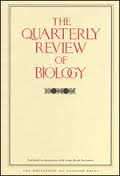 Researchers and contemporary nutrition scientists, media and individuals have long debated how and what our ancestors ate. One of the early proposals by Charles Darwin hypothesised that the hunting of game animals was a defining feature of early hominids, linked with both upright walking and advanced tool use and that isolated these species from their closest relatives (such as ancestors of chimpanzees); contemporised versions of this hypothesis exist to this day. Other insist that while our ancestors’ diets did include meat, it was predominantly scavenged and not hunted. Still others argue that particular plant foods such as roots and tubers were of greater importance than meat in the diets of these species. You know the routine, depending on the veracity of the proponent, one or other tends to become contextualised and propagated as the correct, or at least the closest to correct as someone can be in the 21st century.Early Diets
Researchers and contemporary nutrition scientists, media and individuals have long debated how and what our ancestors ate. One of the early proposals by Charles Darwin hypothesised that the hunting of game animals was a defining feature of early hominids, linked with both upright walking and advanced tool use and that isolated these species from their closest relatives (such as ancestors of chimpanzees); contemporised versions of this hypothesis exist to this day. Other insist that while our ancestors’ diets did include meat, it was predominantly scavenged and not hunted. Still others argue that particular plant foods such as roots and tubers were of greater importance than meat in the diets of these species. You know the routine, depending on the veracity of the proponent, one or other tends to become contextualised and propagated as the correct, or at least the closest to correct as someone can be in the 21st century.Early Diets
Modern scientific methods permit a far greater degree of analytical breakdown than Charles Darwin could have ever imagined. Recent work has presented reconstructions of early hominid diets on the basis of chemical makeups of fossil tooth enamel, evidence of microscopic wear on teeth, and advanced studies of craniodental anatomy, to name a few.
But, a paper out in the pay for view journal The Quarterly Review of Biology in Dec 2014 challenges the notion that selective analysis can answer all questions about our ancestors diet.[1] Instead, say the authors, they should be included—alongside other methodologies—in holistic studies grounded in the fundamentals of modern evolutionary ecology.
Sayers and Lovejoy suggest that researchers should examine a species’ particular habitat and “whole-body” anatomy, including digestion, locomotion, and possible cognitive abilities. In particular, foraging theory—a branch of evolutionary ecology that investigates animal feeding decisions through the lens of efficiency principles—is especially important to consider, as it demonstrates that diet is regulated by the potential value and costs of exploiting individual food items (whether plant, animal, or other) and by the relative abundance of the most profitable foods. In the case of the earliest-known hominids, evidence about their morphology and likely cognitive abilities—in addition to data obtained from modern technologies—provide little support for a reliance on any one particular food type. Rather, these species likely had a broadly omnivorous diet that became increasingly generalized over time.
According to the authors, the early hominid diet can best be elucidated by considering the entire habitat-specific resource base and by quantifying the potential profitability and abundance of likely available foods.
Furthermore, they warn that hypotheses focusing too narrowly on any one food type or foraging strategy—such as hunting or scavenging or any one particular plant category—are too restrictive and should be viewed with caution. Modelling these species’ diets instead
“requires a holistic, interdisciplinary approach that goes beyond merely what we can observe chemically or through a microscope, and draws from ecology, anatomy and physiology, cognitive science, and behaviour.”
Reference
[1] Sayers K, Lovejoy CO. Blood, bulbs, and bunodonts: on evolutionary ecology and the diets of Ardipithecus, Australopithecus, and early Homo. Q Rev Biol. 2014 Dec;89(4):319-57. View Abstract
